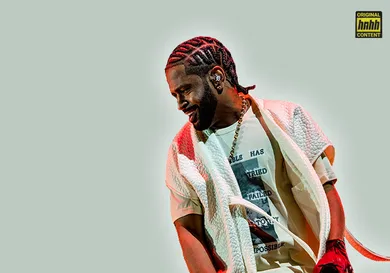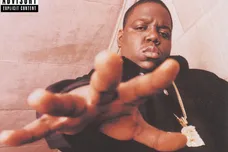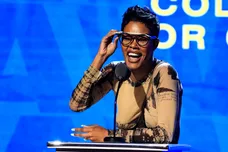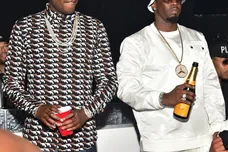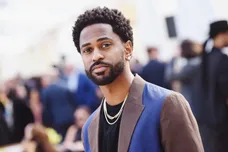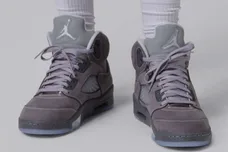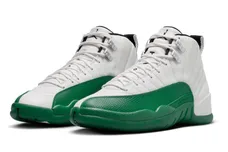The debate on whose face should be carved into the hypothetical Hip-Hop Mount Rushmore of the 2010s is flawed. It’s damn near impossible to choose four artists to represent an entire decade of music — especially one as sonically expansive as the 2010s — but that hasn’t stopped thousands of fans, and even celebrities like LeBron James and Nicki Minaj, from sharing their thoughts on the conversation over the past year. At the end of last week, the monumental discourse was reinvigorated thanks to a viral Dreamville fan page’s tweet that placed Drake, Kendrick Lamar, and J. Cole on Mount Rushmore and, once again, left the fourth and final position up to debate. Last summer, the Hip-Hop community argued over whether Future or Nicki Minaj was more deserving of the final spot. Interestingly enough, Big Sean has now become a much more present name mentioned in the resurfaced conversation.
Sean deserves that.
Yet as many Hip-Hop fans have likely witnessed over the last several years, the six-time Grammy nominee is often ridiculed and called “trash” for mere likes and retweets. There have always been artists that are “cool” to hate, and unfortunately, the former G.O.O.D. music rapper has been shoehorned into that category.
He doesn’t deserve that.
The 34-year-old rapper, on the precipice of his sixth studio album, has quietly built a legacy as one of the greatest Hip-Hop artists of all time. Here’s how.
He endured one of the most visibly frustrating come-ups in modern Hip-Hop history and still beat the odds.
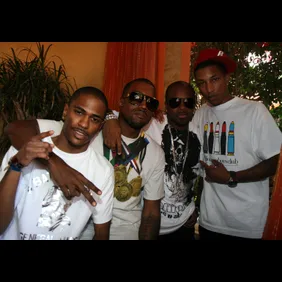
Meetings at the label saying they gon' make Sean blow
Turned the radio on and do I hear Sean? No
Man please do not gimmick me, put me on the shelf and not remember me
And treat me like a John Doe
- Big Sean on “Say You Will” (2009)
A decade before a self-recorded song could be uploaded to YouTube, gain viral notoriety, and land an unbelievably underdeveloped artist a record deal, aspiring young talents had to hope — almost foolishly so — for an opportunity to run into a music industry giant and offer them their demo. J. Cole infamously did so in 2007. The 2014 Forest Hills Drive artist waited outside of Roc-The-Mic studios in New York City for hours, and he continued to stand there as it started to rain. His goal was to meet Jay-Z and give him a beat CD in hopes that he’d secure a placement on American Gangster, but when Hov finally pulled up and saw J. Cole, he curved the hell out of him. That meeting ironically wasn’t even the catalyst that led to Cole’s Roc Nation signing, and it showed that even if you were able to come face-to-face with a popular record label executive, there was little to no chance that it would actually do anything for your career.
Well, two years before J. Cole’s failed attempt at networking with Hov, Big Sean did something similar, and unlike his contemporary’s tragic tale, Sean’s experience was almost mythical.
A local up-and-coming artist and “Friday Night Cypher” rap battle regular at Detroit’s 102.7 FM radio station, Big Sean was urged by his friend and “Woke Up” collaborator Say It Ain’t Tone to pull up to the station and rap for Kanye West, who was there promoting his classic sophomore album, Late Registration. Once he arrived and made contact with Ye, the G.O.O.D. Music founder gave Sean an opportunity to spit 16 bars for him, but as Ye got more and more interested in Sean’s bars, those 16 bars turned into a ten-minute freestyle. It’s possibly one of the coolest “How I Got On” stories of the 21st century, but that doesn’t mean that everything that happened after that moment was easy for Sean.
Having exchanged contact information, Big Sean worked tirelessly to maintain a relationship with Ye, and two years later — after passing on a scholarship to attend Michigan State University — he finally signed to G.O.O.D. Music. The challenges persisted, however, as the mainstream push that typically comes from signing to an artist like Kanye West was almost nonexistent. Sean contributed to Graduation — which is so far the best-selling solo album of Ye’s entire career — without even receiving a proper songwriting credit on “Champion,” and despite dropping his Finally Famous: The Mixtape weeks after Graduation’s release, Big Sean was nowhere close to breaking into the mainstream.
Nevertheless, Sean stayed down and worked on his craft as his celebrity gradually increased, and two years later, he returned with the sprawling 30-track mixtape, Finally Famous Vol. 2: UKNOWBIGSEAN. The gargantuan effort, which was leagues ahead of its predecessor, remains Sean’s longest project to date, and in addition to skit cosigns from the likes of Pharrell and MC Serch, UKNOWBIGSEAN featured a more skilled, confident, and, most interestingly, frustrated version of Sean. On the standout track “Say You Will,” Big Sean directly addressed how his trying relationship with his mentor and G.O.O.D. Music was affecting the trajectory of his career.
The second installment of his Finally Famous mixtape series gave a huge boost to Sean’s profile, and following its release, Sean would go on to be a part of multiple legendary Hip-Hop moments at the turn of the decade. Between 2009 and 2010, the young artist’s talents were requested once again by his G.O.O.D. Music mentor, and although he wasn’t featured on the final version of it (save for the iTunes bonus track “See Me Now”), Sean did participate in Ye’s epic My Beautiful Dark Twisted Fantasy sessions in Hawaii. In 2010, he also appeared on the 2010 XXL Freshman cover alongside the likes of Wiz Khalifa, Jay Rock, J. Cole, OJ Da Juiceman, Freddie Gibbs, and the late Nipsey Hussle.
It’s unclear whether or not he truly knew how iconic both of those experiences were at the time because in between the XXL cover that spring and the arrival of MBDTF that fall, Big Sean was more focused on his career than ever. And it showed with his summertime release of Finally Famous Vol. 3: Big.
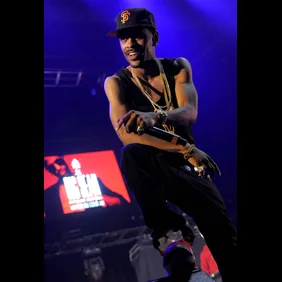
The final installment of the Finally Famous mixtape series was loaded with underrated collabs, like “Made” with Drake, “Fuck My Opponent” with Tyga, and the vibey “Fat Raps (Remix)” cypher with Chuck Inglish, Asher Roth, Chip Tha Ripper, Dom Kennedy, and Boldy James. The tape also featured two of Sean’s earliest, albeit non-commercial, hits — “Super Duper Lemonade” and “Too Fake.” The former was an exemplary showcase of his popular Super Duper Flow over Gucci Mane’s classic “Lemonade” beat, and with the help of Chiddy Bang, the latter track demonstrated that Sean could potentially succeed in a pop-rap ecosystem.
For the first time in his career, Big Sean was in the perfect position to drop his debut album on G.O.O.D. Music. With an increased interest in the promising Detroit rapper, it was announced that his debut album would arrive in September 2010, on the same day as Ye’s fifth studio album and Cudi’s sequel to Man On The Moon. If you have any recollection of Hip-Hop over the last decade, you’ll know that nothing of that magnitude would come out of the G.O.O.D. Music camp until the summer of 2018. Big Sean’s debut had been pushed back until 2011, but with that delay came another legendary moment in Sean’s career: G.O.O.D. Fridays.
Kanye’s G.O.O.D. Friday series in 2010 was so damn good that fandom for the epic weekly music experience persisted well throughout the rest of the decade, and Big Sean played a major role in it, appearing on “G.O.O.D. Friday” with Ye, Common, Pusha T, Kid Cudi, and Charlie Wilson; “Don't Look Down” with Ye, Mos Def, Lupe Fiasco; “Looking For Trouble” with Ye, Pusha T, Cyhi the Prynce, and J. Cole; and the extended version of “Christmas in Harlem” with Cam'ron, Jim Jones, Vado, Cyhi the Prynce, Pusha T, Musiq Soulchild, and Teyana Taylor. By the time 2010 was over, Big Sean was solidified as a blog era darling, and in 2011, it was finally time for his debut.
Led by his easygoing first single “My Last,” Big Sean’s debut album experienced multiple delays until it was finally released on June 28, 2011. Like the three mixtapes that came before it, Sean’s first major-label outing was aptly titled Finally Famous, especially when considering that the fateful day when he met Kanye West had occurred almost six full years prior to its release. Sean was in the G.O.O.D. music fold for roughly half a decade, which is a far cry from the one-to-three-year waiting period that many of his top-selling contemporaries had to wait out in order to drop their first album. To have his name constantly mentioned alongside Ye’s while not having much to show for it must have been mentally and spiritually draining, but Sean stayed humble and worked hard until it was his time to shine, a theme that has persisted throughout his entire career.
He bounced back from a “sophomore slump.”
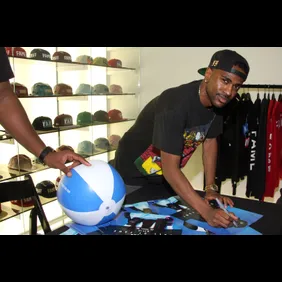
Okay, you win some, lose some, break some, bruise some
Life could be a test, multiple choice, choose some
Choose one, stick with it, man, prove some
Sometimes the best teachers is ourselves goin' through somethin'
- Big Sean on “Win Some Lose Some” (2015)
After succeeding in the herculean effort of making it out of G.O.O.D. Music Purgatory to release Finally Famous, Big Sean had yet to experience the biggest challenge of his career — overcoming the narrative that he was a flop.
Finally Famous — which is by far the most surface-level and least impressive studio album in Sean’s entire catalog — debuted at #3 on Billboard and sold 87,000 copies in its first week. For a record released in 2011 with guest features from Kanye West, Wiz Khalifa, Chris Brown, Roscoe Dash, Lupe Fiasco, The-Dream, Nicki Minaj, and more, it was a decent starting point, but, in hindsight, not an outstanding one considering the talented artists and producers attached to the project.
His sophomoric effort arrived after a huge year for Sean. In 2012, he became even more of a household name thanks to his iconic verses on “Mercy” and “Clique” the now six-times-platinum and four-times-platinum respective singles from G.O.O.D. Music’s epic compilation album Cruel Summer, and later that year, he also released his fourth and final mixtape Detroit. Detroit, for all intents and purposes, was the industry’s wake-up call. Where previous hits like “Dance (Ass),” “I Do It,” and “Marvin & Chardonnay” did more for his pull at radio stations than his reputation in Hip-Hop, Detroit made people realize that Big Sean really did deserve to be in the same conversation as the Drakes, Nicki Minajs, and J. Coles, and he did it without much — if any — involvement from his world-renowned mentor. As a result, the hype for his second album was insatiable.
Detroit could have, and probably should have, been Big Sean’s sophomore album, but instead, he dropped Hall of Fame on August 27, 2013. Most people hate it, and while an argument could be made that it’s blindly and unreasonably disliked, numbers prove that it is one of Sean’s most poorly received albums of his career. Debuting at #3 on the Billboard 200, Hall of Fame almost replicated the commercial success of Finally Famous, but it ultimately ended up selling about 15,000 fewer copies than its predecessor in its first week. Thus, it became Sean’s undisputed flop, and he was immediately cast as Hip-Hop’s latest victim of the “sophomore slump.” Pitchfork didn’t even bother to review it. To date, Hall of Fame is Sean’s only gold-certified album amongst three other platinum records.
The gag? Hall of Fame was leagues ahead of Big Sean’s debut. The ambitious 18-track album had everything from Lil Wayne, Jhené, and Common-assisted hits to tender and inspirational deep cuts with James Fauntleroy, Nas, and Kid Cudi, and many of the motivational and authentic conversations housed on that record have aged spectacularly. Yet as he alluded to in his 2012 interview with Hip Hop N More, “Some people are going to like it. Some people are going to hate it.” As fate would have it, most people hated it, which really put Sean in a precarious situation moving forward.
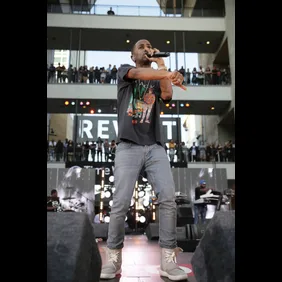
Less than two full years later, Big Sean returned with Dark Sky Paradise, and all talks of his sophomore slump immediately ceased. Loaded with hits like “I Don’t Fuck With You,” “Blessings,” “All Your Fault,” and “Play No Games,” DSP was an undeniable success. By balancing the introspective and inspirational cuts that overflowed on Hall of Fame with the radio-ready earworms that fans had grown to expect from Finally Famous, Big Sean was able to unleash the best-selling album of his career. Dark Sky Paradise opened at #1 on the Billboard 200 and dished out 173,000 album-equivalent units (of which 139,000 were pure sales), immediately launching Sean back into the upper echelon of Hip-Hop.
Although he experienced one of the most notable sophomore slumps of the 2010s, Big Sean proved his greatness by bouncing back from a critically panned and commercially underwhelming album with a career-defining body of work. There aren’t too many other artists of Sean’s stature who have been able to do that in the latter half of the 2010s.
He grows with every album, and he isn’t afraid to experiment.
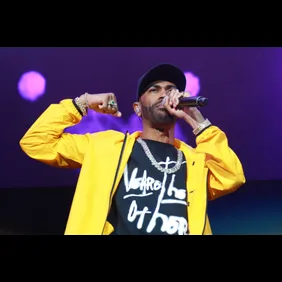
I seen people in the same place 10 years later
Man that shit pathetic
God talking to me telepathic like it only happen if you let it
I can't spend my whole life looking at the same ceiling fan
When I feel like I ain't got no ceilings man
If I ain't special why I feel it then?
- Big Sean on “Bigger Than Me” (2017)
Following the success of Dark Sky Paradise, Big Sean opted to go on a creative detour before getting to work on his fourth studio album, and the result was 2016’s Twenty88, a full-length collaborative album with Jhené Aiko. Prior to the release of their joint record, the duo was known for pumping out gems like “Beware,” “I’m Gonna Be,” and “I Know,” but Twenty88 put Jhené and Sean’s chemistry on full display. The collaborative record was also somewhat of a bridge between Big Sean’s third and fourth studio albums, as it showed a more intimate side of the Detroit artist’s pen and teased his improving beat selection.
I Decided was released one year later in 2017, and it further solidified him as a force to be reckoned with. His fourth studio album was a more serious and conceptual offering that explored topics like regret, depression, and purpose, and even with such a dark aesthetic, I Decided still managed to debut at #1 on the Billboard 200 and move 151,000 album-equivalent units in its first week. While it was impressive to see a new selection of hits (“Moves,” “Bounce Back,” and “Jump Out The Window”) offered on the album, I Decided showcased Sean’s artistic growth and understanding of the music industry more than anything. Four years after his previous concept album was practically hated by everyone, Big Sean was able to put together a theme-driven record that was strong enough to garner him his fifth Grammy nomination.
Later that year, Sean tried to pull off a feat that only a select number of artists have ever achieved — dropping two hit albums in one calendar year. Having joined forces with Metro Boomin for the second collaborative album of his career, Sean released Double or Nothing with only a few days' notice. The side project debuted at number six on the Billboard 200, and although it kind of fell by the wayside in terms of promotion and audience reception, the project still demonstrated the next step in Big Sean’s growth. As a collaborator, the former G.O.O.D. music artist became more expansive with his guest features, as evidenced by the appearances of artists like Young Thug, Swae Lee, 21 Savage, and Kash Doll. In addition to sharpening his pen throughout the 10-track project, Sean also found himself experimenting with new sounds and flows, like the Latin-inspired “Who’s Stopping Me” and the off-kilter Young Thug collab “Even The Odds.” Love it or hate it, Double or Nothing had plenty of highlights, many of which laid the groundwork for Sean’s fifth studio album and final release on G.O.O.D. Music.
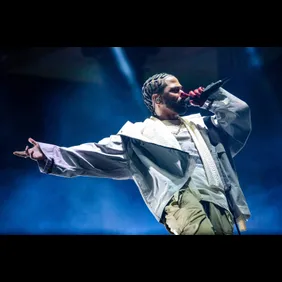
Just as his 2012 mixtape was often touted as Big Sean’s best work, its sequel, Detroit 2, has perhaps fully overshadowed its predecessor and the rest of Sean’s catalog. After a three-year gap between projects — the longest that the FF to Def artist has ever implemented — his fifth studio album arrived to critical fanfare and more commercial success. Detroit 2 became Sean’s third straight studio album to top the Billboard 200, an incredible accomplishment especially considering the late stage in his career and the fact that none of his fellow G.O.O.D. Music signees have ever notched three consecutive number ones.
Beyond its commercial success, however, Detroit 2 was emblematic of Big Sean’s growth as an emcee, a songwriter, and a human being. Laced with both introspective and revealing tracks as well as low-key hits, the album was such a stellar addition to Sean’s discography that even skeptics gave him his due.
In the years since the release of Detroit 2, Sean has teamed up with Hit-Boy for his first post-G.O.O.D. release, absolutely obliterated an epic L.A. Leakers freestyle, and been dissed by his career-long mentor and idol. Yet even in what could have been the messiest moment of his career, Big Sean stayed true to his character by working things out with Ye — who publicly said that signing him was the worst thing he’s ever done — in private. Not too many chart-topping and platinum-certified Hip-Hop artists would have been able to move forward from that situation, but Sean did it with grace.
However, Ye’s past Drink Champs comments are, in a way, bigger than his own outlook on his decorated signee. Over the last decade, Big Sean has been overlooked and belittled by critics and fans to the point of disrespect.
In 2022, Big Sean is a Hip-Hop underdog whose releases may not stir up as much conversation as J. Cole, Kendrick Lamar, Nicki Minaj, Future, Drake, or his most notable contemporaries, but of all those names that were just mentioned, he’s one of the only ones who has consistently improved with every project. Despite the hate that Hall of Fame received upon its release, his sophomore album was exceptionally better than the surface-level, party-friendly rap on Finally Famous. That trend continued with Dark Sky Paradise, I Decided, and, most recently, Detroit 2, and that accomplishment can’t be ignored when critics and fans are so vocal about the stagnancy that some of the most popular rappers in the world have adopted. Beyond the growth he's reflected across his studio albums, he has an incredible string of mixtapes that have both impacted and influenced the blog era of rap, and this extends beyond flow or beats, it trickles down to fashion and style as well.
Big Sean is one of the greatest Hip-Hop artists of all time, and the fact that he has made it out of an extremely trying label situation, overcome a potentially career-killing album, and continued to humbly improve his artistry knowing damn well that a large amount of Hip-Hop fans — and perhaps even his fellow artists — don’t respect his contributions to this genre is all the more inspiring.
So put some respect on Big Sean’s name. He deserves it.
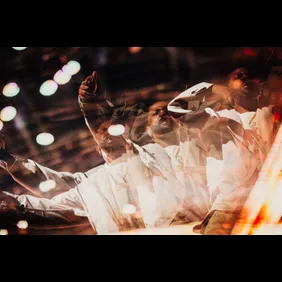
This piece is part of an ongoing series where we make the case for specific rappers to be included in "greatest of all-time" discussions. The more obvious choices (such as André 3000, Lil Wayne, Eminem, Jay-Z, Nas, Biggie, 2Pac) will be ignored in favor of artists who tend to get overlooked these days, for one reason or another. Previously, our writers have made cases for Pusha T, Ice Cube, DJ Quik, Big Boi, DMX, Ghostface Killah, Busta Rhymes, Dr. Dre, 50 Cent and Nicki Minaj.
